
I'd written my friend Murray Lord, a Sydney attorney, to see if we could set up dinner with him on our final day of the trip in Sydney. He suggested that instead we spend the day in Tasmania! There was a cheap flight on Virgin Blue then available, and as Murray had been raised in Tasmania, we could stay with his parents, Bruce & Gillian Lord, in Hobart. We arrived after dark on 20 August — did some spotlighting for mammals at a local park, and more in the Lords's back yard — and then were up with the dawn (above; view of Hobart harbor from the Lord home) for our one day in Tassie. |
|||
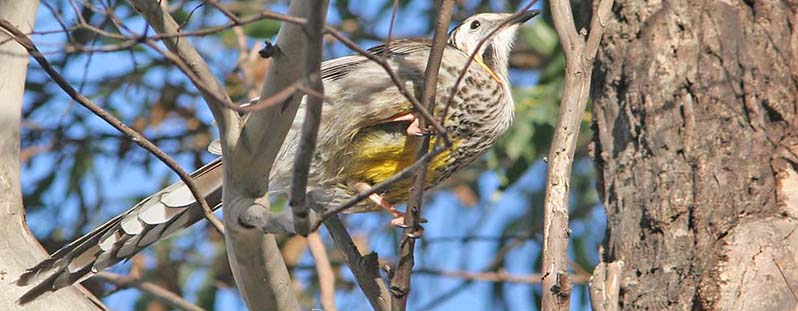 |
|||
The plan was to try to see all 12 Tasmania endemics in one day. Although the forecast called for a storm during the day, the morning was bright and clear. Our first stop was Peter Murrell Reserve, and we quickly located Yellow Wattlebird (above; the world's largest honeyeater), Tasmanian Native-Hen (below left), Forty-spotted Pardalote (below center), and Black-headed Honeyeater (below). |
|||
|
|||
|
|||
| Peter Murrell Reserve is a lovely patch of eucalypt forest (above left), with a nice pond that has Platypus. Those tend to be seen at dawn or dusk, and we didn't really have time to see one, although we made a short effort. It was a good spot, though, for the endemic Yellow-throated Honeyeater (above right). | |||
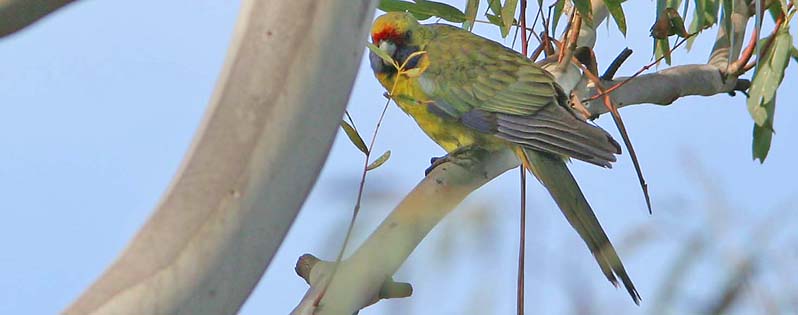 |
|||
A lot of these photos are not very good, but at least there were a couple of quick grab shots. Some really good bird photos from Tasmania are on Alan Fletcher's site and Murray Lord's site. |
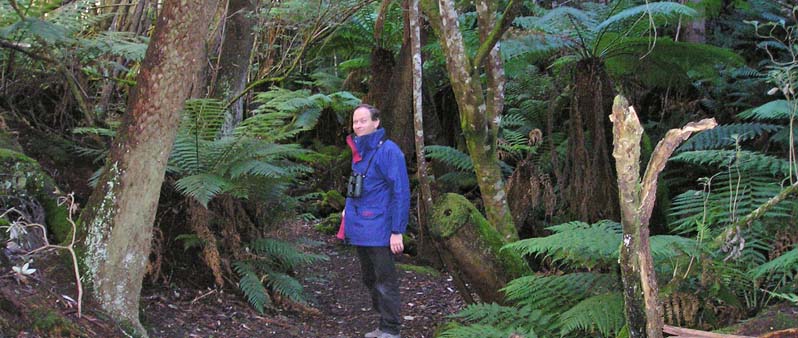 |
||
Our next stop was at Fern Tree trail, up on Mt. Wellington, and in the clouds. It was cold and dreary, and eventually it would start to rain. Murray (above) and Rita (below left) were dressed for the conditions, but photography became very tough. We saw Tasmanian Thornbill and Tasmanian Scrubwren in the dark gullies (like the one Rita is traversing) but just could not locate a Scrubtit in the drizzle. A female Pink Robin in a dark gully was a nice non-endemic bonus. We also heard a Black Currawong, but couldn't see it through the trees. The rain did let up enough, though, to locate a Strong-billed Honeyeater (below right) in the car park. |
||
|
||
 |
||
|
||
By the end of the afternoon we were nicely set up for a night drive through the countryside after dinner. which proved to be successful for mammals (including four Eastern Quoll) even though it was rainy and we missed the endangered Tasmanian Devil. I was particularly impressed with one bird found on the shores of Prosser Bay, near Orford, in the afternoon: Hooded Plover (below). This Australian species is apparently everywhere scarce, local, and often declining. Its bold pattern makes it among the most attractive plovers on earth. |
||
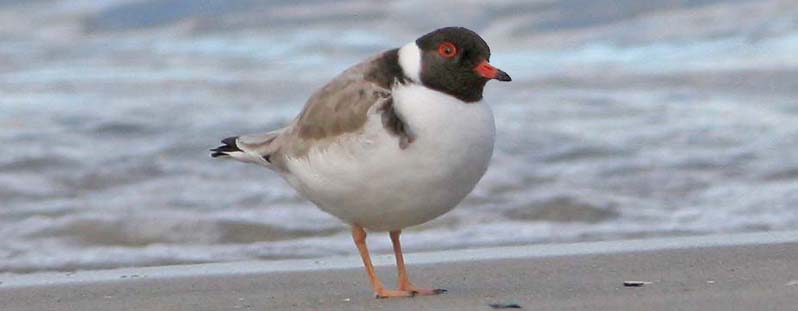 |
||
|
INTRODUCTION TO AUSTRALIA TRIP August 2008 |
|
Perth to Albany, W.A. SOUTHWEST |
|
Alice Springs to Uluru RED CENTRE |
|
One day in TASMANIA |
|
page created 8-10 Dec 2008
|
© Don Roberson 2008 |
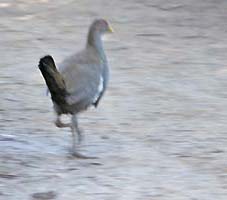
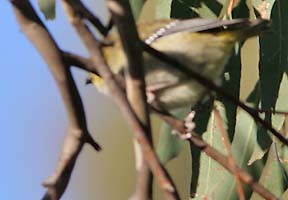
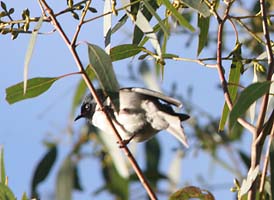
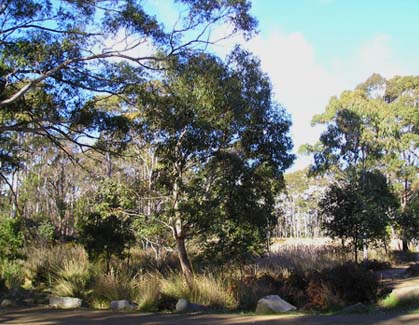
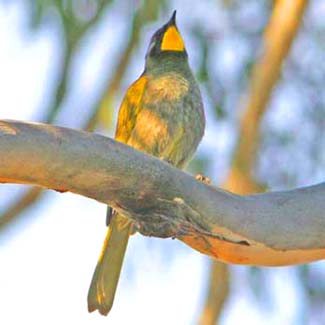
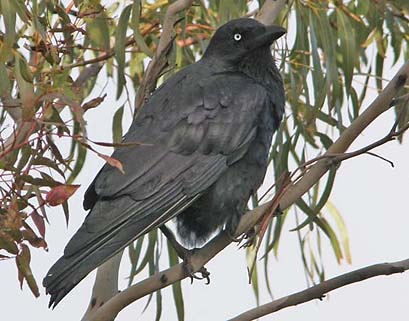 It took a little longer for Dusky Robin (not photo'd) and Green Rosella (above), but we were doing quite well. A cooperative Forest Raven (left) — not an endemic, but a lifer for us — added another species.
It took a little longer for Dusky Robin (not photo'd) and Green Rosella (above), but we were doing quite well. A cooperative Forest Raven (left) — not an endemic, but a lifer for us — added another species. 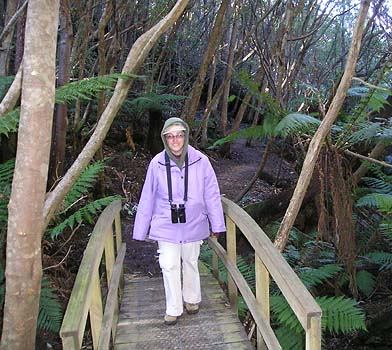
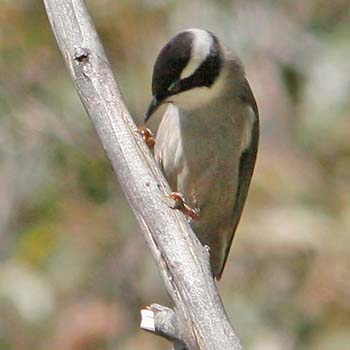
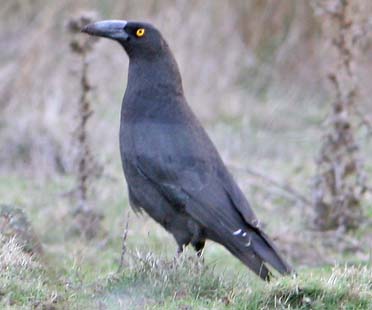 The
rain would start and stop all afternoon as we visited Wielangta Forest
and the coast (Murray on the shores of Prosser Bay, above). We found
the final endemic of the day — Black Currawong (right) — near the forest; indeed, one field had 110 of them. There were also a few Gray Currawong of the Tasmania race arguata
(below), so we watched them in short flights. Black lacks the white
patch on the wing coverts of Gray, and bill shape is different.
The
rain would start and stop all afternoon as we visited Wielangta Forest
and the coast (Murray on the shores of Prosser Bay, above). We found
the final endemic of the day — Black Currawong (right) — near the forest; indeed, one field had 110 of them. There were also a few Gray Currawong of the Tasmania race arguata
(below), so we watched them in short flights. Black lacks the white
patch on the wing coverts of Gray, and bill shape is different.
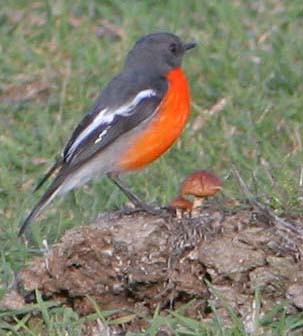 So
we would end up with 11 of the 12 endemics, a fine one-day showing,
given the weather, and we found other birds of interest, including a
nice male Flame Robin (left). Late in the afternoon
we drove a farm road onto the Earlham Estate, with paddocks on the
shore, and found 7 Cape Barren Goose grazing there.
So
we would end up with 11 of the 12 endemics, a fine one-day showing,
given the weather, and we found other birds of interest, including a
nice male Flame Robin (left). Late in the afternoon
we drove a farm road onto the Earlham Estate, with paddocks on the
shore, and found 7 Cape Barren Goose grazing there.